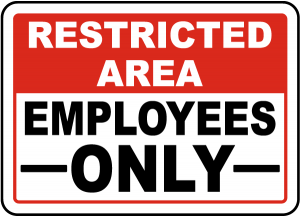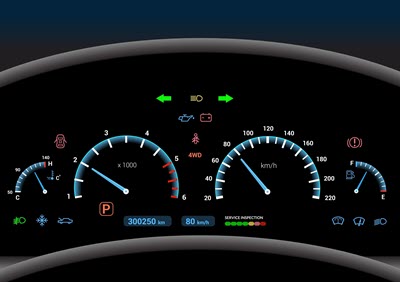 My name is Bob Jones. I am a 74 year old “Recovering Engineer”. I have been a computer programmer since 1967. I have created some pretty amazing computer programs including the virst commercially available windowing system for the IBM PC in 1983, an online database transaction processing system for Chrysler Corporation in 1973-75, a Data Definition Language compiler for Tandem Computers in 1979, and many more. And at my advancing age, I still love to build software solutions.
My name is Bob Jones. I am a 74 year old “Recovering Engineer”. I have been a computer programmer since 1967. I have created some pretty amazing computer programs including the virst commercially available windowing system for the IBM PC in 1983, an online database transaction processing system for Chrysler Corporation in 1973-75, a Data Definition Language compiler for Tandem Computers in 1979, and many more. And at my advancing age, I still love to build software solutions.
About thirth years ago, I discovered that I had another large organ in my body that was (and still is) lots smarter than my head. Through a fgluke experience as a Director at Microsoft’s fledgling Consulting Services organization in 1991, I started learning about self-awareness, openness and emotional maturity, and began the process of personal growth.
In 2001, I discovered the Mankind Project, and now, almost 20 years later, my extensive experiencees helping men wake up, grow up and become better people has led me into the world of personal coaching. I havelearned to speak and listen from my heart and to help people go deep and explore their shadows and self-limiting beliefs. I have even learned how to rewire and release limiting belifes and replace them with empowering ones.
The process of becoming a skilled coach, though, was not without its challenges. My teacher, Lion Goldman, was constantly inundating his students with new material, new processes, new challenges and ideas. Barely a day would bass when I didn’t recieve another gem of wisdom from him. But that created a problem. Where to put this information? How to orbanize it to make it useful and accessible?
And to complicate matters, I developed a case of Wet Macular Degeneration which impacted my vision so severely that I can no longer drive a car, and I have difficulty even reading a small computer screen like the one in my iPhone.
My personal work made it pretty obviouss that playing the “poor me” violin was not an option; so I simply dug in and worked the problem. I quickly learned that I had a rather unique competitive advantage over most other coaches. I could figure out how to handle lots of information and build simple systems to make that work easy. Most coaches are highly adept at reading people’s emotional state, but this does not necessarliy translate to organizing the many notes written on scraps of paper that they can no longer find. But I could solve that problem, both for myself and for them. So I did. I built the Coaches Back Office.
What is the Coaches Back Office?
 “You need a website!” or so the common wisdom goes. I spent a massive amount of time on my Connexions Coaching website, but I constantly found myself grabbing a piece of scrap paper to make some note about something I needed to do. Then one day, I realized that my website was focused outward, on the people I want to attract, but I was doing nothing for the person I was spending the most time with: ME!.
“You need a website!” or so the common wisdom goes. I spent a massive amount of time on my Connexions Coaching website, but I constantly found myself grabbing a piece of scrap paper to make some note about something I needed to do. Then one day, I realized that my website was focused outward, on the people I want to attract, but I was doing nothing for the person I was spending the most time with: ME!.
I realized that the front office (my public website) needed to be pretty, clean, no spelling errors, etc. But when you go through the door that says “Employees Only”, the rules change. In the Back Office, what is important is flexibility and simplicity. I need to be able t add new processes or tools quickly and easily, but I don’t need to spend an time on styling or making things pretty.
So I stat down (metaphorically) and thought about what I needed my from my back office. I realized quickly that I needed some way of managing the issues that come up. Yes, I could use a task manager or some external website, but I wanted whatever I do to be easily modified. So I created an Issues list
I noticed that I had information about the businesses I deal with in many places, and lots of the issues I need to address are related to one of my “Vendors”. So I created a Vendors list, and made it easy to associate each issue with a vendor.
Then I realized that One of my vendors is me, so I added my own business as a vendor and added lots of issues I need to take care of, like writing this page.
The principle emerged is that my business is in constantly morphing mode, and my back office needs to be constantly morphing.
Departments
 Even very small business perform processes that can be clustered into “departments” that can be managed by different people. In my small business, there are only two people, me and my wife / partner / best friend, Donna. She manages the house, so I am left with managing all the other departments in our small businesses.
Even very small business perform processes that can be clustered into “departments” that can be managed by different people. In my small business, there are only two people, me and my wife / partner / best friend, Donna. She manages the house, so I am left with managing all the other departments in our small businesses.
Since clarity on how to run our business seems to emerge as flashes or moments of awareness, the underlying structures of our business must be easily shifted. The accordion below shows the current structure. It will be different tomorrow.
Dashboards
 Each department needs specific tools. We use the concept of a Dashboard as a means of providing quick access to those tools.
Each department needs specific tools. We use the concept of a Dashboard as a means of providing quick access to those tools.
In a car, the dashboard provides you with important information like how fast are you going and how much fuel do you have. In the Back Office, the tashboard can tell you what issues and activities are on your plate, who are your contacts and what is the status of each client engagement.
Unlike a car’s dashboard, Back Office dashboards can be easily customized to meet your needs and the tools can be integrated with other tools. For example, when yuo add a new contact, that contact can be added to your Outlook contacts and your email drip marketing system. Or when you identify an issue that needs attention, you can assign that issue to any of your contacts and they will immediately get an email which will contain a link back to that specific issue and its’ description, and priority.
New dashboards can be created easily, and new tools can be added to your dashboards as your needs change.
When was CBO developed and when will it be released? 
I started building the Coach’s Back Office (DBO) in January, 2021. With Covid-19 killing off damn near anybody dumb enough to challenge it, I hunkered down and focused on getting organized. I thought about what I needed to develop a good coaching practice and then I built it, dashboard by dashboard.
I expect that that the current version of the CBO will be ready for use by close friends by late Spring, 2021.
I live in Bellungham, Washington, 25 miles from the Cnaadian border. Bellingham is a city of about 90,000 highly progressive souls, surrounded by about 140,000 more people living in Whatcom Countyy. Mount Baker Ski area forms the Eastern edge of the county, while the Chuckanut Mountains form the southern border., and the Salish Sea laps at our Western shores.
Bellingham is a wondeful place to live. The air is fresh, nothing in town is more than 20 minutes away, and there are (or were) plenty of good restaurants. Hopefully as we emerge from our cacoon of self-isoplation, we will be able to dine out again soon.
The Coaches Back Office is an online service for personal coaches. It is designed as a highly modular collection of “Dashboards” which can build on each other. For example, Contact Management is the first dashboard. It manages contact information for people and organizations/ The data about people and organizations can be built-upon by other dashboards.
This version of the Coaches Back Office is a “proof of concept” implementation. It has been built with virtually no “custom code”. Instead, it was implemented using a large collection of WordPress “plugins” (canned and licensed units of functionality). This approach has made it possible for one developer to build the whole system in just a few months. Although this approach made it possible to build this proof of concept rapidly, there were many compromises made to to the limitations of the available plugins.
This proof of concept version of the Coaches Back office will be made available to a small group of customers who agree to use it in its current state and provide ongoing written evaluations and feedback. If the acceptance and feedback attracts sufficient investment capital, the entire system will be re-implemented using much more powerful technology. I estimate the re-implementation will require three full time developers about six months to complete. Given the highly modular nature of the CBO, we should be able to complete the first few dashboards in 1-2 months.
Given my advancing age, my intention is to develop and deliver a robust product with a clearly defined market niche and proven value, then sell the entire system to a team capable of growing the

